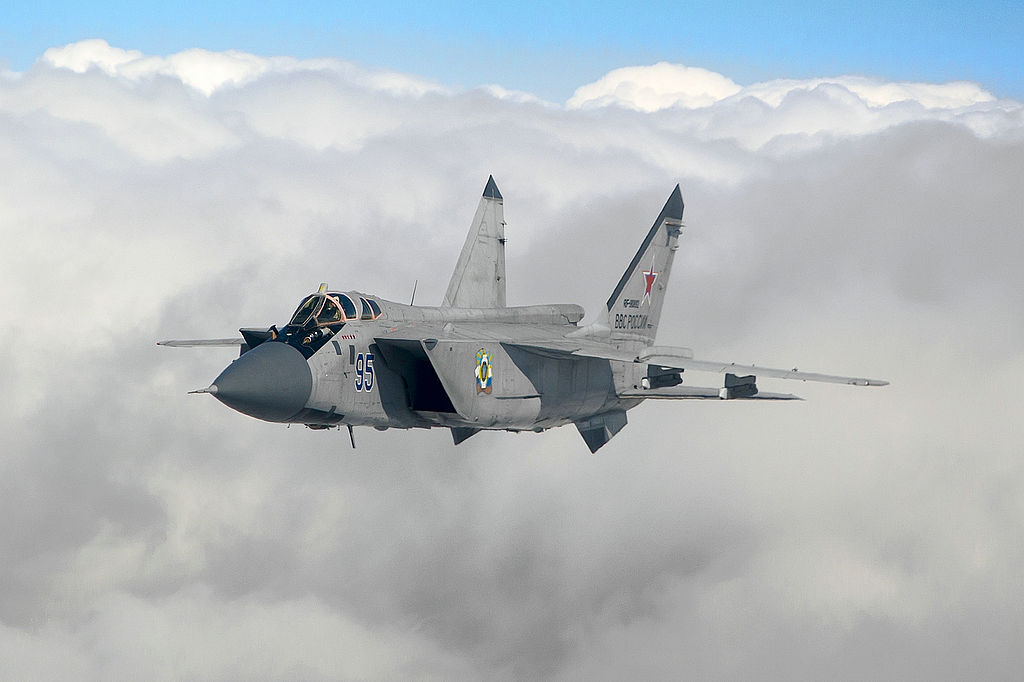The SR-71 Blackbird
The most sophisticated spy plane in the Blackbird family, the SR-71, which also included the A-12 and YF-12, was created by a group of Lockheed personnel under the direction of Clarence “Kelly” Johnson, who was vice president of Lockheed’s Advanced Development Company Projects at the time. Known as the “Skunk Works,” this group is now a division of Lockheed Martin. On December 22, 1964, the Blackbird’s maiden flight was accomplished.
The SR-71 was built to cruise at heights of up to 85,000 feet and at “Mach 3+,” which is over three times the speed of sound, or more than 2,200 miles per hour.
Soviet MiG-31 too close for comfort
An SR-71 was briefly beyond Russian territorial seas on October 6, 1986, near the Murmansk area coastline. The SR-71 had flown over the Soviet Union’s coast before, and this was not the first time. The Blackbird was assigned the task of taking side-looking pictures. The US was searching for nuclear submarine activities, which is why they were looking into the Soviet Union. However, this time a Soviet interceptor got a little too close for comfort. Ed Yeilding explained to Paul Crickmore, for his book Lockheed Blackbird: Beyond the Secret Missions (Revised Edition);
‘Flying straight toward each other in our supersonic jets, I was reminded of two gallant medieval knights galloping full speed toward each other, only I did not have a weapon,’ Ed Yeilding, former SR-71 Blackbird pilot recalls.
‘In the distance far ahead, at perhaps 100 miles, I could see a long, bright white Russian contrail flying directly towards us, but at much lower altitude.
‘I knew it must be a Soviet fighter, probably a MiG-31, then the newest Soviet interceptor.
‘I raised my periscope and saw too that we were leaving a long contrail and I knew the fighter could see our contrail as easily as I could see his.
Orders to fire missiles at USAF SR-71 Blackbird
‘I also assumed he had orders to fire his missiles if I was late with my turn and slipped over Soviet territorial waters to within 12nm of Soviet land, and I assumed the pilot would like nothing better than an opportunity to fire his missiles at an SR-71 Blackbird.
‘I believed the Soviet fighter would not fire his missiles as long as we stayed on our usual track, but I also knew he or his ground controllers could mistake our position as being closer than we actually were.
‘We had no defences like flares against heat-seeking missiles, but again, we believed that missile “probability of kill” was very low due to our high speed and altitude.
‘I was determined to fly the track as planned and get the pictures.
‘For survival, Curt [RSO Lt Col Curt Osterheld] and I depended on accurate navigation to keep us just outside Soviet territorial waters to prevent a launch, and we depended on our superior speed and altitude in case missiles were launched.

‘From my F-4 experience with intercepts and visual acuity, my best guess is that eight miles was his closest approach.
‘He appeared to run out of airspeed at the top of his contrail, at maybe 65,000ft or 10,000ft below us.
‘I saw his nose below the horizon and fall away. Curt and I stayed on course and got the pictures.
The MiG-31, the premier Soviet supersonic interceptor
“During my three years of flying overseas reconnaissance missions, I frequently saw contrails far below of potentially hostile fighters, but that day, above the Arctic Circle over the Barents Sea, was the only time I saw a Soviet fighter get close enough that I could actually see metal, though barely larger than a dot and only because our routine track was predictable. Back at Mildenhall, during our debriefing, our intelligence officer told us, with near certainty, that the interceptor was a MiG-31, the premier Soviet supersonic interceptor at that time.”
Check out Habubrats SR-71’s Twitter profile and Born into the Wilde Blue Yonder’s Facebook page for further Blackbird photos and stories.
Photo by U.S. Air Force and Dmitriy Pichugin via Wikimedia Commons

